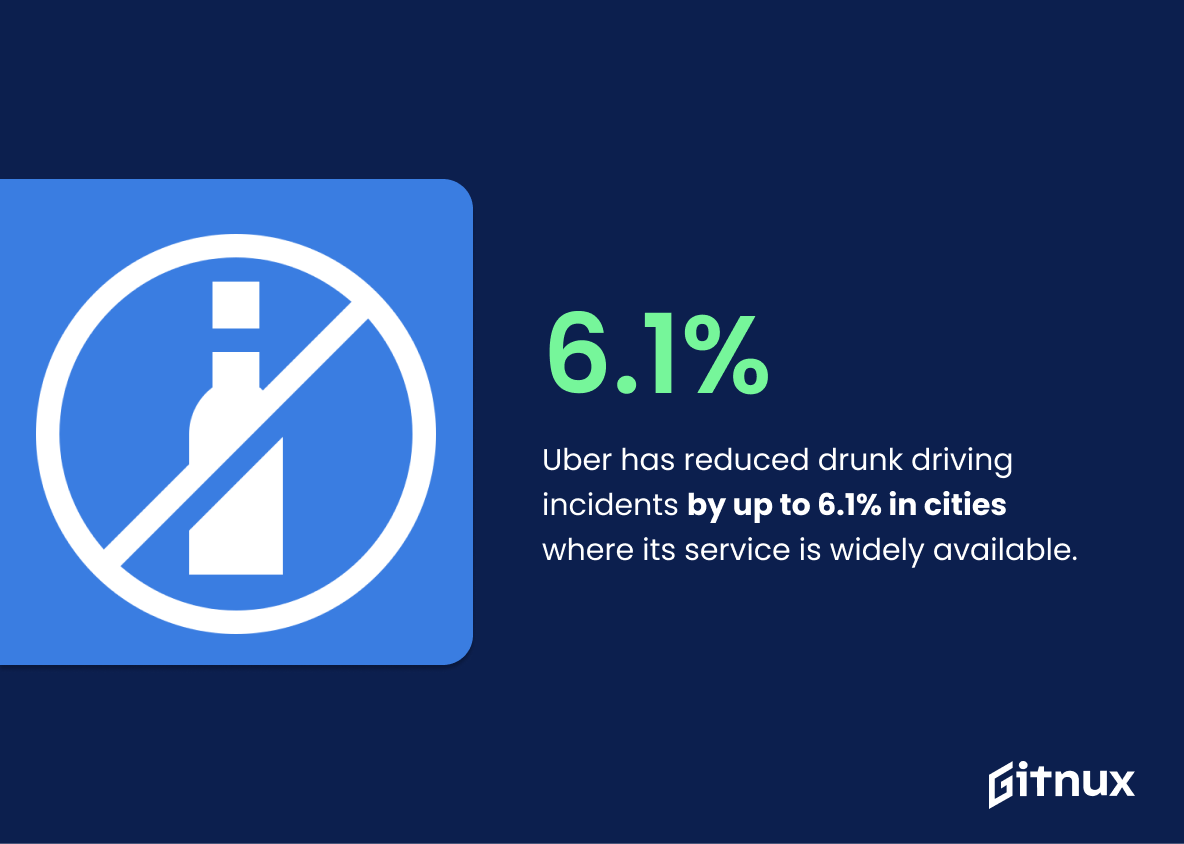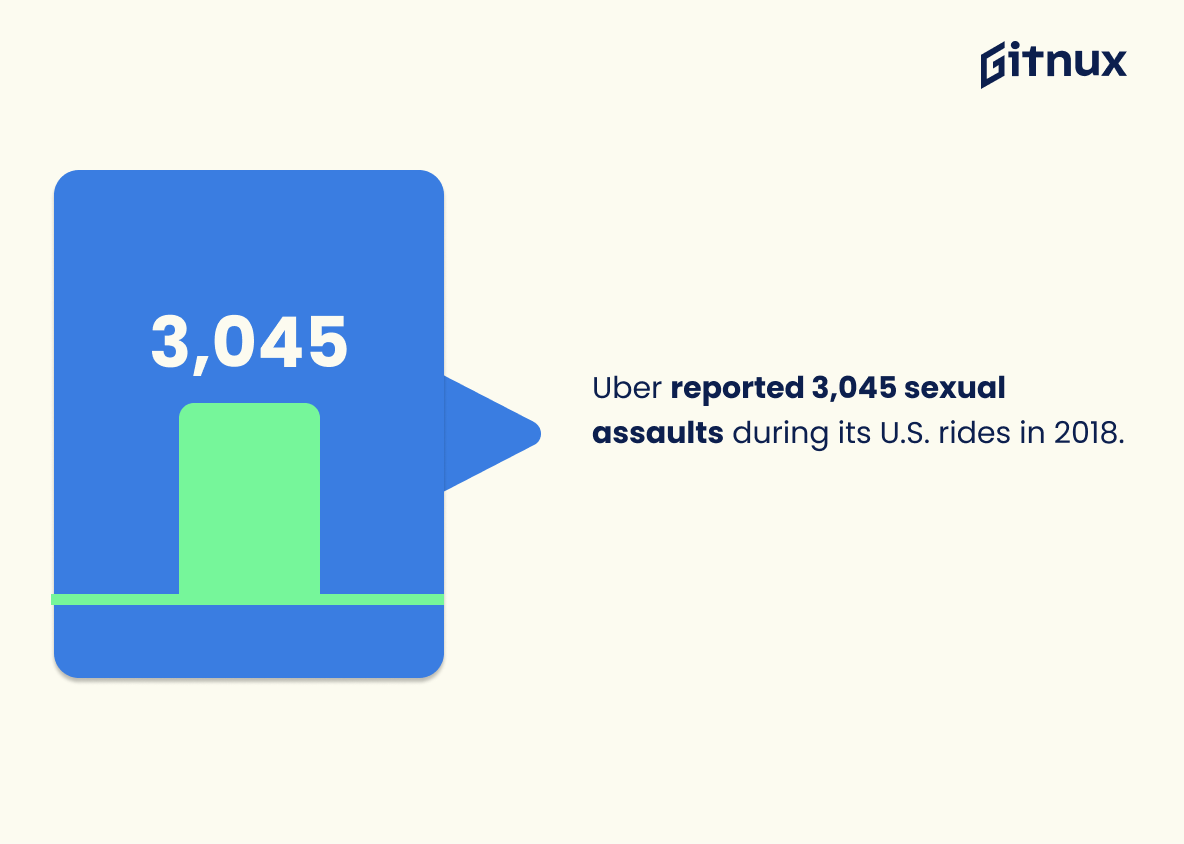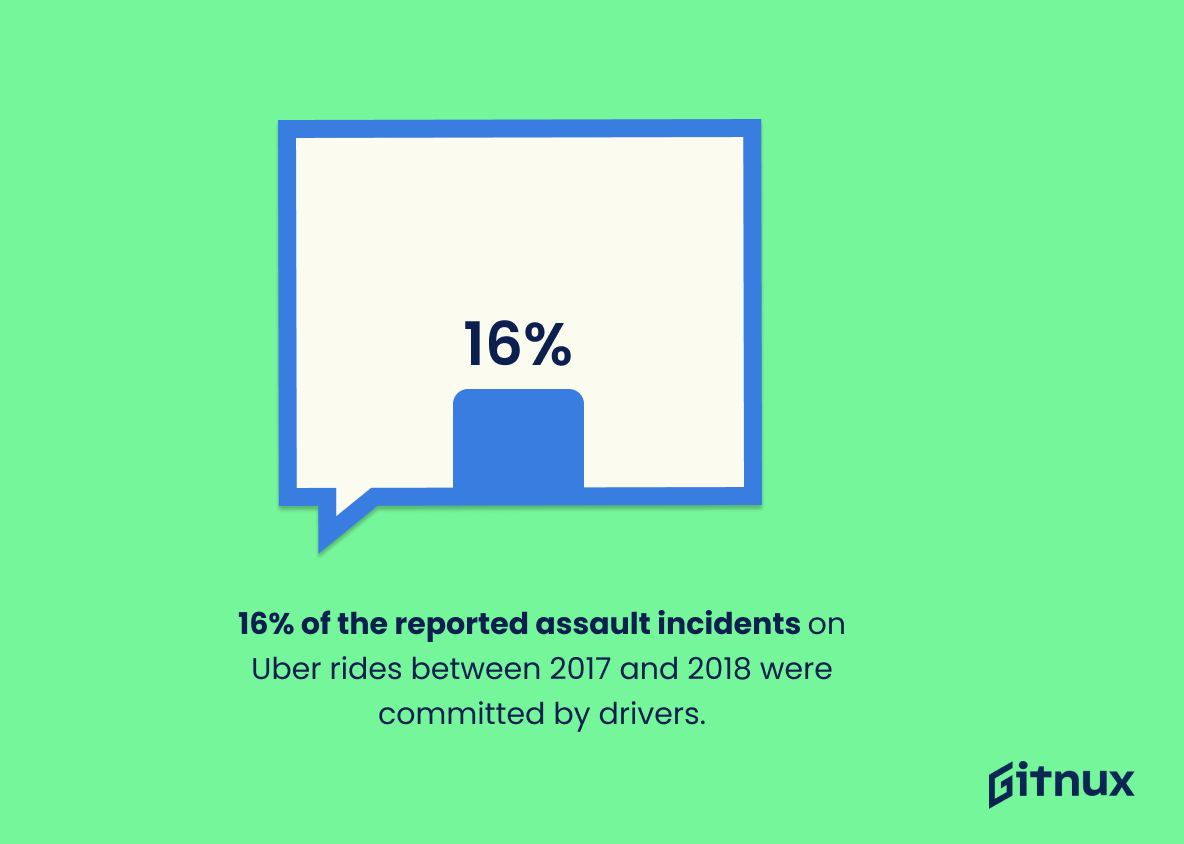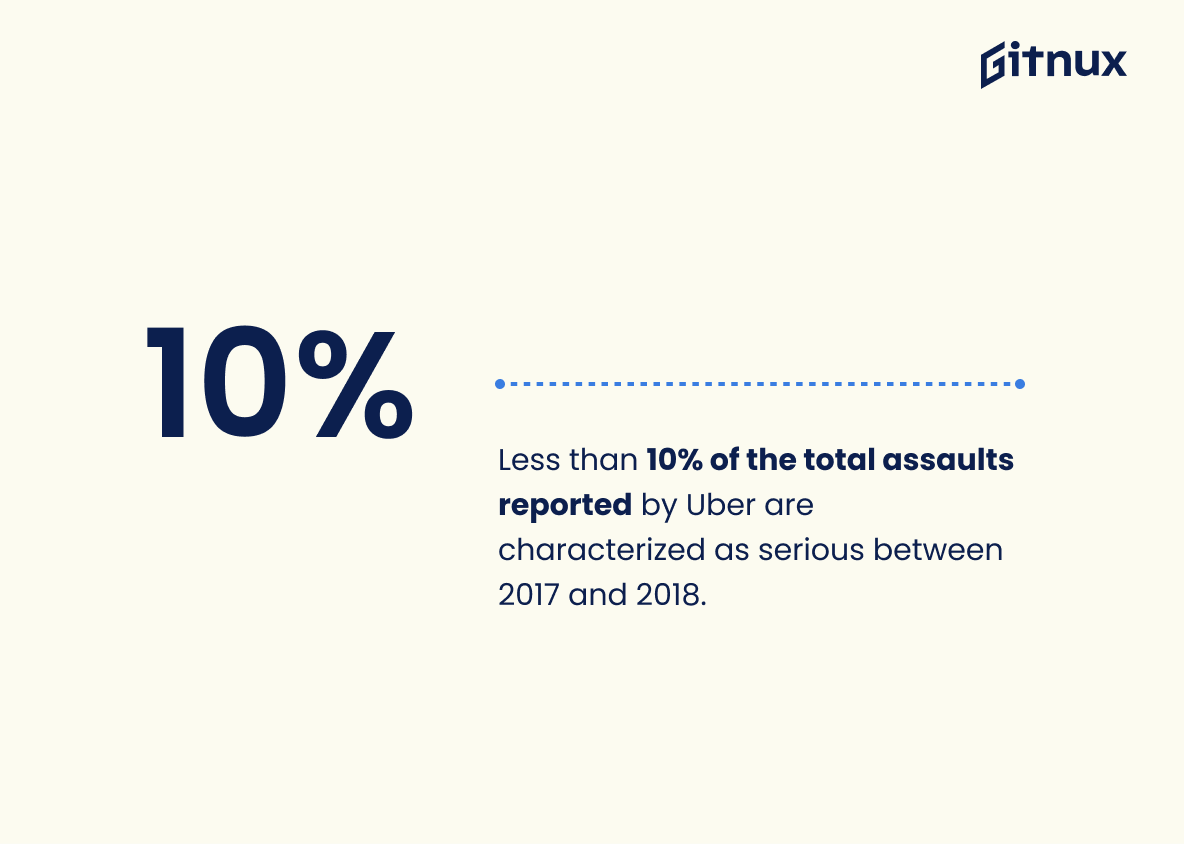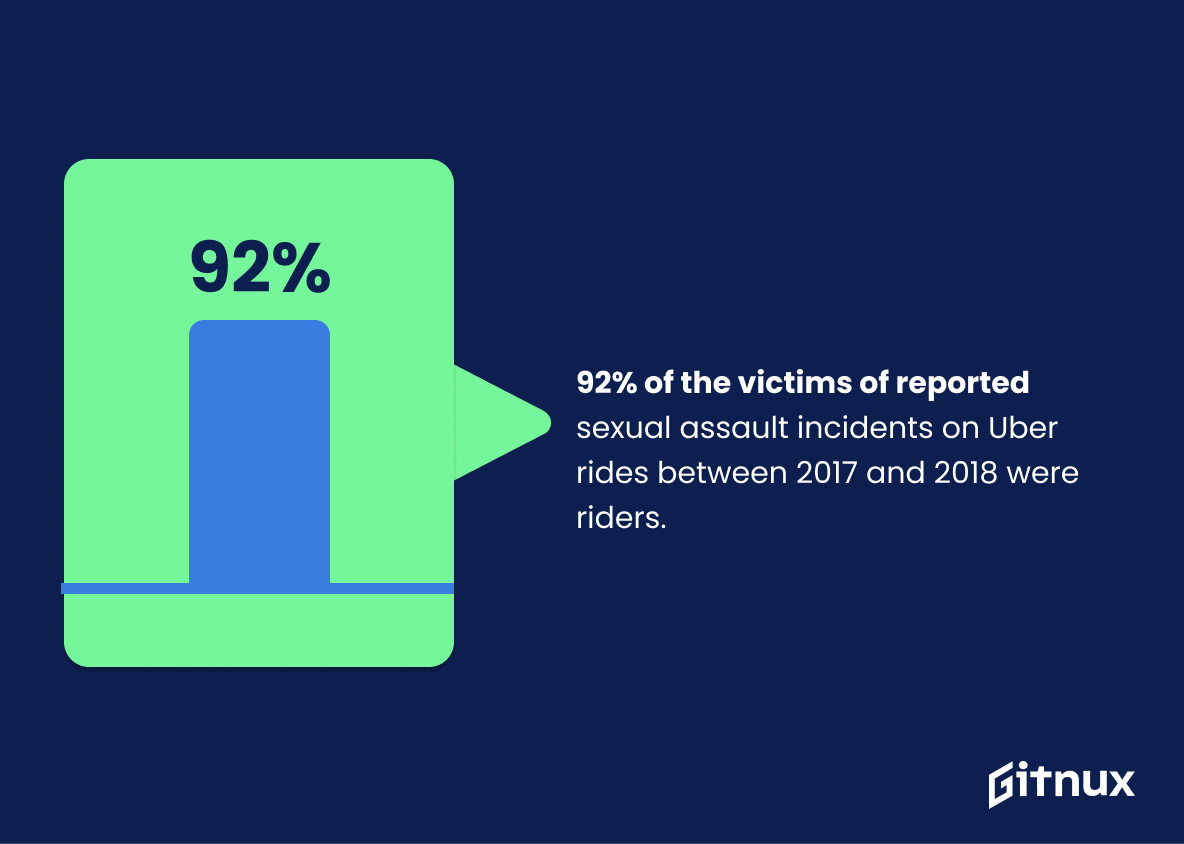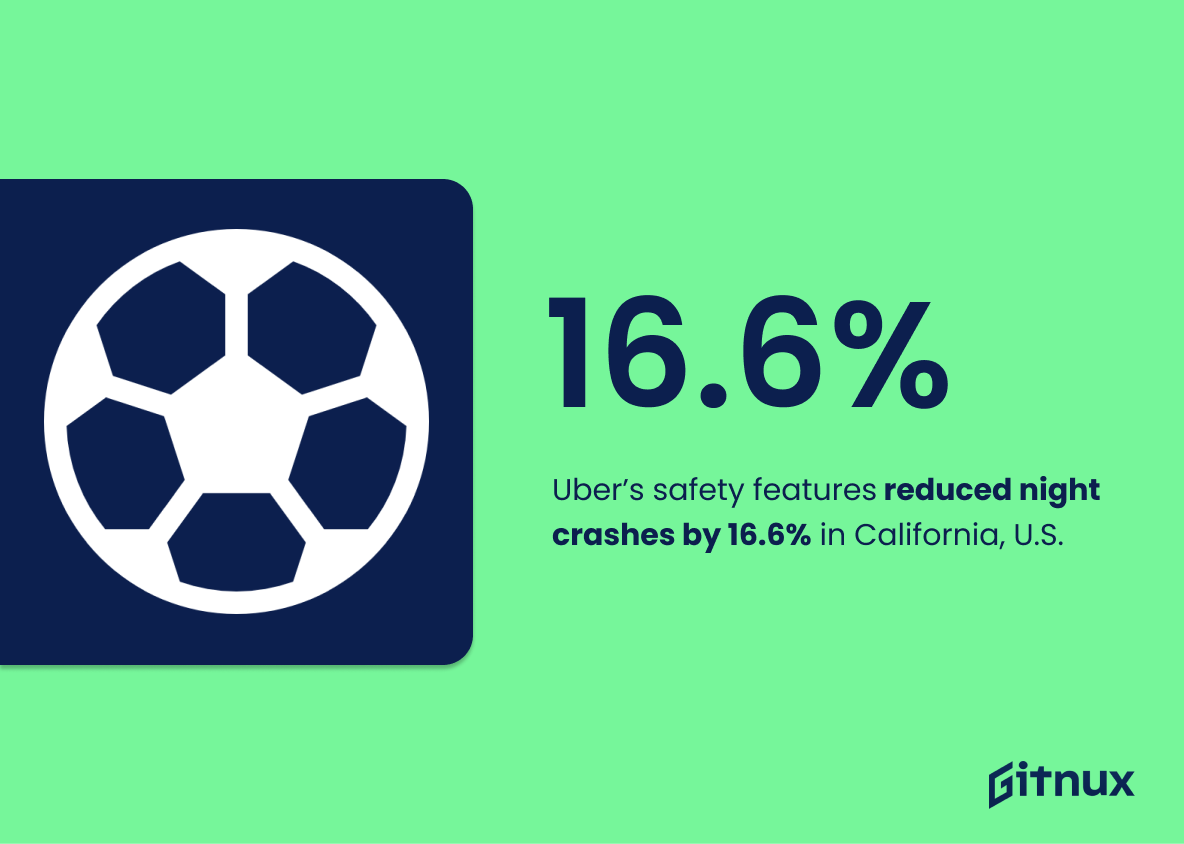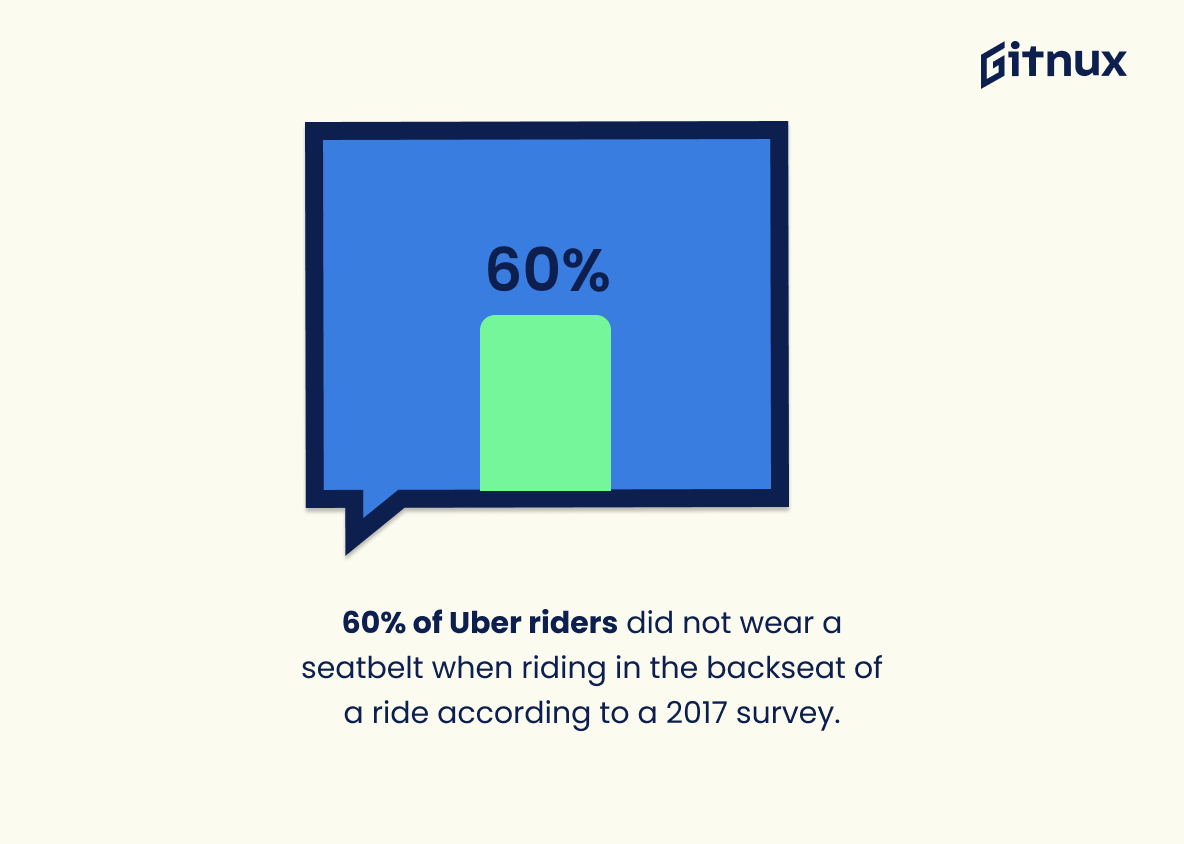In the bustling world of on-demand transportation, Uber stands out as a global leader. Yet, amidst its success and convenience, concerns over passenger safety often arise, begging the question: How safe is Uber ride really? In this blog post, we delve into the world of Uber safety statistics, scrutinizing the truths and dispelling the myths. From detailing Uber’s safety features to examining its reported incidents, we aim to provide an empirical and unbiased overview for riders, drivers, and curious parties to make informed decisions. So, buckle up as we navigate through the maze of figures, facts, and insights that shed light on the safety of using Uber.
The Latest Uber Safety Statistics Unveiled
Uber has reduced drunk driving incidents by up to 6.1% in cities where its service is widely available.
Delving into this valuable piece of statistical data, one uncovers Uber’s indirect role in promoting road safety. The noteworthy 6.1% reduction in drunk driving incidents in cities where Uber services are predominantly available substantiates an important safety benefit of this ride-sharing platform.
In a blog post discussing Uber Safety Statistics, this fact brightly illuminates how Uber’s accessibility could be a major factor in discouraging intoxicated individuals from getting behind the wheel after a night of indulgence. Thus, it underpins the argument that Uber isn’t just a convenient transit choice, but also a potentially lifesaving option, discouraging risky behaviors such as drunk driving, enhancing city safety profiles, and saving lives. Consequently, this statistic not only speaks to Uber’s impact on individual habits but also on the wider community’s health and well-being.
In 2018, Uber had 49 reports of deaths during 1.3 billion rides in the U.S.
Delving into the realm of Uber safety statistics, let’s illuminate a rather stark figure from 2018: Uber recieving 49 reports of fatalities correlated to its services out of 1.3 billion rides provided within the U.S. This detail holds worth not merely as an isolated piece of data, but as a measuring stick to gauge the degree of safety afforded by this widely used ride-hailing application. It also allows us to draw comparisons with other means of travel expenses or even against its closest rival, Lyft. Furthermore, it forces into focus the pivotal question of responsibility when such tragedies do occur, a gray area within the gig economy. In essence, it is a key node in the wider discussion about the safety of riders and drivers in our dynamically evolving commute landscape.
There were approximately 0.0003 deaths per million Uber miles traveled in 2017.
As we weave the narrative of the blog post around Uber Safety Statistics, this intriguing numerical detail emerges as a touchstone. It anchors the conversation, reflecting Uber’s commitment to ensuring that every mile traveled under their banner in 2017 was veiled under an impenetrable fortress of safety. Detected from a plethora of taxi-related datasets, this statistic—0.0003 deaths per million Uber miles—echoes a powerful testament to the company’s rigorous safety protocols. The relative scarcity of fatalities illuminates the critical strides Uber has taken, striving to alleviate concerns about their transportation services. Painted by such a statistic, a tableau of Uber’s relentless pursuit of safer journeys unfolds, giving the reader pause—and reason to trust.
Uber reported 3,045 sexual assaults during its U.S. rides in 2018.
Unveiling the raw and often unsettling underbelly of the ride-hailing giant, this chilling count of 3,045 sexual assaults during Uber’s U.S. rides in 2018 is a glaring red flag that demands immediate attention. In a blog post dissecting Uber’s safety statistics, this number presents not just an isolated statistic, but a shock wave that reverberates through each digit, emphasizing the pressing necessity for more stringent safety measures. It beacons a clarion call for change by spot-lighting the sobering reality of potential threats lurking behind our convenient rides. This earth-shaking revelation elevates our understanding of the dual-edged sword that is ride-sharing – a collaboration between convenience and safety.
There were 235 rapes reported in Uber rides in the U.S. in 2018.
Highlighting this distressing figure of 235 reported rapes underscores the urgent need to address issues of safety within Uber rides in the U.S. It serves as a stark reminder that while Uber has certainly revolutionized transportation, it isn’t without its disturbing pitfalls. This alarming statistic punctuates the blog post, driving home the crucial message that much more must be done to ensure the safety of passengers. It is not just a number but a wake-up call to all stakeholders – from riders to Uber’s top executives- demanding comprehensive safety measures.
280,000 Uber rides out of 1.3 billion rides had a support request for a safety-related concern in the U.S. in 2018.
This intriguing piece of data—280,000 out of 1.3 billion Uber rides eliciting a safety-related support request in 2018—stands as a testament to Uber’s vast operational scale and the prevailing concerns surrounding customer safety. Diving deep into the heart of Uber safety statistics, it allows us to pull back the curtain and explore the infrequent but significant instances of safety-related issues. Admittedly, these figures may seem minuscule, yet they serve as an essential reminder of the inherent unpredictability and risks that can arise at any moment throughout the immense navigation of daily transits. Bridging the gap between perceived safety and statistical realities, this figure offers a hard, critical look at the ongoing quest for safety improvements in Uber’s services.
16% of the reported assault incidents on Uber rides between 2017 and 2018 were committed by drivers.
Unveiling the hidden facets of rider safety, the startling revelation that 16% of assault incidents reported on Uber rides between 2017 and 2018 were driver-driven, paints a grave picture. These numbers tangibly punctuate the urgency for a robust review and modification of Uber’s selection, background check processes and safety measures for drivers. They underscore that the question at hand is not just about passenger behavior, but a shared responsibility between company, driver, and rider. This poignant statistic signifies the gravity of the situation and invokes the need for comprehensive measures to enhance ride-hailing safety.
Less than 10% of the total assaults reported by Uber are characterized as serious between 2017 and 2018.
A keen look at Uber’s safety statistics offers an enlightening revelation: vital among them is this intriguing fact that a mere fraction- less than 10% – of total reported assaults were charactersied as serious between 2017 and 2018. This striking percentage emanates as a beacon of necessity within the discourse of ride-hailing safety, it not only sheds light on the nature of most reported assaults but also unravels the degree of severity posed to riders and drivers alike within the Uber ecosystem. Thus, as we forge ahead in the critique and observation of Uber’s safety measures, it’s crucial to cognize this fact. Each statistic, such as this one, adds another layer to our understanding, ultimately sculpting a more comprehensive view of Uber’s commitment to safety.
92% of the victims of reported sexual assault incidents on Uber rides between 2017 and 2018 were riders.
With such an alarming percentage, namely 92%, outlining the victims of reported sexual assault incidents on Uber rides between 2017 and 2018 as riders, one can’t help but underscore the magnitude of this situation. When addressing Uber Safety Statistics in a blog post, this striking figure is a critical pointer that evidently signals an urgent call to deepen commitment towards enhancing rider safety. Such a statistic drives home a solemn reminder to the readers that while Uber has revolutionized transport and offered considerable convenience, it indeed casts a shadow on user safety, particularly for riders. In essence, it’s a compelling call to action – a stark wake-up call that necessitates immediate steps in mitigating such incidents and fostering a safer environment for riders. It’s an immediate prompt to scrutinize safety policies, analyze existing safeguards, while also serving as a reminder to users to stay vigilant during their rides.
Ridesharing services like Uber may reduce personal DUI arrests by 10-15% on average across cities in the U.S.
Highlighting the potential reduction of personal DUI arrests by 10-15% in U.S. cities when ridesharing services like Uber are utilized presents a compelling argument for the safety benefits of such services. It paints a picture of the significant role these platforms play in promoting responsible drinking and improving public safety. By offering convenient and accessible transportation options, Uber and similar services may encourage individuals to forego the risk of drinking and driving, thus contributing to the decreasing DUI arrest rates. Thus, in the framework of a blog post about Uber safety statistics, this statistic stands out as a strong testament to Uber’s potential to help mitigate road risks and enhance overall community safety.
Uber’s safety features reduced night crashes by 16.6% in California, U.S.
In a world where safety is paramount, the statistic showing Uber’s safety features resulting in a 16.6% decrease in night crashes in California, U.S., shines a bright spotlight. The substance of this data reflects Uber’s commitment to safety, translating to real-world impact as measured through fewer accidents at night time, notoriously a period associated with higher accident rates. The allure of this statistic lies not just in its testament to Uber’s safety initiatives, but also in its potential to instil trust in the minds of passengers and drivers alike. This statistic has the potential to act as the lynchpin in the conversation around Uber’s safety progress, encapsulating Uber’s multifaceted efforts to revolutionize transportation safety.
60% of Uber riders did not wear a seatbelt when riding in the backseat of a ride according to a 2017 survey.
Unveiling the curtain on a significant insight, it’s revealed that a substantial 60% of Uber passengers in 2017 shunned the security of seatbelts while seated in the back. A seemingly routine decision yet profoundly influential in shaping the narrative around safety measures in Uber rides. The magnitude of this finding sits center stage in a discourse on Uber Safety Statistics, augmenting our understanding of user habits and potential risks.
These figures underpin a crucial safety concern that Uber and its users must address, as neglecting seatbelt use increases the chance of injury or fatality during accidents. Consequently, these statistics serve as a call to action, an urgent plea for increased safety awareness in the shared economy of ride-hailing services and, specifically, within Uber rides.
Conclusion
Throughout this post, we have shed light on various aspects of Uber safety statistics, aiming to provide a comprehensive picture of the safety measures adopted by Uber, and their effectiveness. Undeniably, Uber has taken appreciable strides to enhance passenger and driver safety, from stringent background checks to in-app safety features. However, like any other realm of human activity, it’s not without potential risks. Ultimately, riders and drivers must supplement the company’s efforts by being cautious and responsible themselves. The statistics highlighted in this article should serve as both a testament to Uber’s commitment to security, and a reminder of the ongoing necessity for revisions and improvements. Ubiquitous safety during the Uber journey is a shared responsibility, with each of us bearing an essential role in maintaining it.
References
0. – https://www.techcrunch.com
1. – https://www.academic.oup.com
2. – https://www.www.bbc.com
3. – https://www.www.theguardian.com
4. – https://www.www.nber.org
5. – https://www.journalistsresource.org
6. – https://www.www.cnet.com
7. – https://www.www.nsc.org
8. – https://www.www.reuters.com
9. – https://www.www.npr.org
